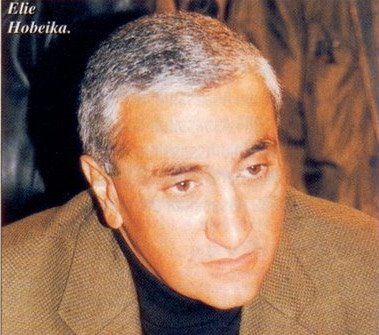

Pyongyang sees US role in Cheonan sinking
By Kim Myong Chol
* SOUTH KOREAN VIEW....
http://www.atimes.com/atimes/Korea/LE08Dg01.html
http://www.csmonitor.com/World/2010/0519/Seoul-says-North-Korea-sank-Cheonan-warship.-Are-sanctions-next
Despite its strong denial of any involvement and expressions of sympathy for lost fellow Koreans, fingers are being pointed at North Korea over the tragic sinking of the 1,200-ton South Korean corvette Cheonan in the West Sea or Yellow Sea on the night of March 26.
"A North Korean torpedo attack was the most likely cause for the sinking of a South Korean warship last month," an unnamed US military official told CNN on April 26. Up to 46 of the ship's 104 sailors were killed in the sinking.
Apparently, North Korea is being set up as the fall guy in an incident that is so mysterious that a Los Angeles Times April 26 story datelined Seoul was headlined, "James Bond Theories Arise in Korean Ship Sinking".
So far, no hard evidence has been produced linking North Korea to the disaster. However, this has not stopped media and experts from holding the North responsible. The South Korean daily Chosun Ilbo wrote on April 29, "It is difficult to imagine a country other than North Korea launching a torpedo attack against a South Korean warship."
Revealing circumstantial evidence
Is it possible that North Korea carried out the daring act of torpedoing a South Korean corvette participating in a US-South Korean war exercise? The answer is a categorical no. The circumstantial evidence is quite revealing, showing who is the more likely culprit.
Mission impossible
There are four important points that make it clear that a North Korean submarine did not sink the South Korean corvette.
Fact 1.North Korean submarines are not stealthy enough to penetrate heavily guarded South Korean waters at night and remain undetected by the highly touted anti-submarine warfare units of the American and South Korean forces. A North Korean submarine would be unable to outmaneuver an awesome array of high-tech Aegis warships, identify the corvette Cheonan and then slice it in two with a torpedo before escaping unscathed, leaving no trace of its identity.
Fact 2. The sinking took place not in North Korean waters but well inside tightly guarded South Korean waters, where a slow-moving North Korean submarine would have great difficulty operating covertly and safely, unless it was equipped with AIP (air-independent propulsion) technology.
Fact 2: The disaster took place precisely in the waters where what the Pentagon has called "one of the world's largest simulated exercises" was underway. This war exercise, known as "Key Resolve/Foal Eagle" did not end on March 18 as was reported but actually ran from March 18 to April 30.
Fact 3: The Key Resolve/Foal Eagle exercise on the West Sea near the Northern Limit Line (NLL) was aimed at keeping a more watchful eye on North Korea as well as training for the destruction of weapons of mass destruction in the North. It involved scores of shiny, ultra-modern US and South Korean warships equipped with the latest technology.
Among the fleet were four Aegis ships: the USS Shiloh (CG-67), a 9,600-ton Ticonderoga class cruiser, the USS Curtis Wilbur (DDG-54), a 6,800-ton Arleigh Burke class guided-missile destroyer, the USS Lassen, a 9,200-ton Arleigh Burke class guided-missile destroyer and Sejong the Great, a 8,500-ton South Korean guided-missile destroyer.
The four surface ships are the most important assets of the two navies, and have multi-mission platforms capable of conducting various tasks, such as anti-submarine warfare. There is every likelihood that they were supported by nuclear-powered US submarines and a South Korean "Type 214" submarine that uses AIP technology.
The sinking of the Cheonan has made headlines around the world. If indeed it was a US accident, it is an embarrassing indictment of the accuracy of the expensive weapons systems of the US, the world's leading arms exporter. It has also cost the Americans credibility as the South's superpower guardian. Ironically, this has made North Korean-made weapons more attractive on the international market.
The South Koreans and the Americans charging the North Koreans with the sinking of the naval vessel in South Korean waters only highlights the poor performance of their expensive Aegis warships, as well as the futility of the US-South Korean joint war games and the US military presence in Korea.
Fact 4: Deputy Secretary of State James Steinberg said on March 30 that he doubted there was North Korean involvement in the sinking: "Obviously the full investigation needs to go forward. But to my knowledge, there's no reason to believe or to be concerned that that may have been the cause."
General Walter Sharp, US Forces Korea (USFK) commander, also saw no link between North Korea and the sinking. In an April 6 press conference, he said: "We, as Combined Forces Command and the ROK [Republic of Korea] Joint Chief of Staff, watch North Korea very closely every single day of the year and we continue to do that right now. And again, as this has been said, we see no unusual activity at this time."
No motivation for vengeance
There have been misplaced reports that the sinking was an act of retaliation for a naval skirmish in November last year "in which the North came off worse", as reported by the Times of London on April 22.
As a North Korean navy officer, Kim Gwang-il, recalled on North Korean television on Armed Forces Day, April 25: "[In that incident] a warship of our navy single-handedly faced up to several enemy warships, to guard the NLL ... [The North's warship] inflicted merciless blows on them in a show of the might of the heroic Korean People's Army (KPA) Navy."
The first duty of the KPA is to prevent war while jealously safeguarding the territorial air, sea and land of the Democratic People's Republic of Korea, as this safeguards the peace and security of the Korean Peninsula.
The Korean People's Army Navy would not attack South Korean or American warships unless provoked, since these vessels carry innocent soldiers on the high seas. True, the KPA Navy would be justified in torpedoing a US Aegis ship or a nuclear-powered submarine if one were caught red-handed. But the KPA Navy would not stoop to infringing on South Korean waters to attack a South Korean ship at random, unless it had returned there after committing hostile acts against North Korea.
Friendly fire
Seven facts indicate friendly fire as the most likely cause of the naval disaster. It may be no exaggeration to say that the South Korean president and his military leaders have shed crocodile tears over the dead South Korean sailors.
A torpedo could have been launched from any of the American or South Korean warships or warplanes taking part in the Foal Eagle exercise alongside the hapless Cheonan.
The four Aegis ships and most South Korean warships carry Mark 46 torpedoes, which have improved shallow-water performance for anti-submarine warfare and anti-ship operations.
General Sharp had issued on March 4 a five-point safety message warning that "a single accident can undermine the training benefits you will receive during KR/FE '10. Remain vigilant and engaged."
It appears that Sharp's warning came true, and the US repeated the kind of friendly fire incident for which it is notorious in Iraq and Afghanistan.
After the ship disaster happened on the night of March 26, Sharp promptly cut a visit to Washington to testify at congress to fly back to Seoul, according to the March 30 edition of Kyonggi Ilbo.
President Barack Obama then called his South Korean counterpart on April 1, ostensibly to express condolences over the ship disaster, but also to offer him the privilege of hosting the next nuclear security summit in 2012, as was reported by Joong Ang Ilbo on April 14.
Obama made this offer one week before he and Russian President Dmitry Medvedev signed a nuclear arms reduction treaty in Prague, and two weeks before the 2010 nuclear security summit took place in Washington.
When Obama announced his decision to select South Korea as host of the next major nuclear security summit in 2012, Agence France-Presse reported that "the announcement surprised many". Most observers presumed that Russia would lead the next meeting.
The most plausible explanation is that Obama offered South Korea the summit due to an overriding need to mollify otherwise possible South Korean resentment at the friendly fire sinking, while covering up the US's involvement in a friendly fire torpedo attack. Most probably, Sharp reported to Obama the potentially disastrous consequences of the public discovering the true nature of the incident. This would likely lead to a massive wave of anti-American sentiment and put Obama and South Korean President Lee Myung-bak in an extremely awkward situation.
Obama must have felt relieved at the South Korean president's ready acceptance of his offer of compensation. One article carried in the April 14 edition of Joong Ang Ilbo was headlined "Veep Biden Says LMB [Lee Myung-bak] Is Obama's Favorite Man". The comment was made by Biden on April 12, one day before the nuclear summit.
Sharp unexpectedly attended the April 3 funeral of a South Korean rescue diver, Han Ju Ho, who died while participating in the search for missing sailors from the corvette. Sharp was seen consoling the bereaved family in an unprecedented expression of sympathy.
Joong Ang Ilbo reported on April 27 that the South Korean government would deal strictly with rumors rampant on the Internet that a collision with a US nuclear submarine had caused the sinking.
The best solution is for the South Korean government team investigating the ship disaster to find an old mine responsible. It is easy to falsely accuse North Korea, but public pressure will mount for military reprisals against North Korea, which will promptly react by turning Seoul into a sea of fire in less than five minutes. North Korea would not flinch from using nuclear arms in the event of US involvement.....
|



